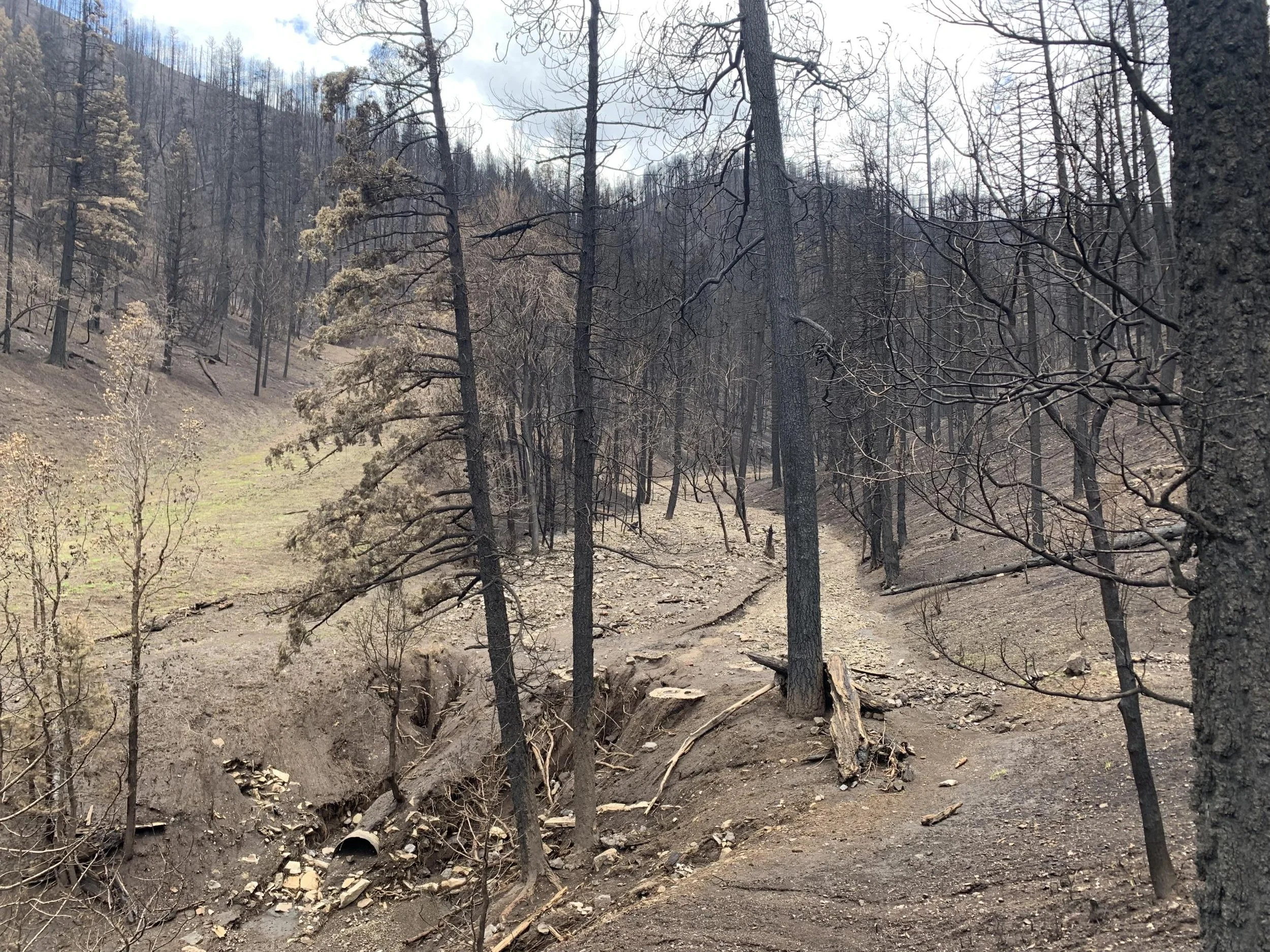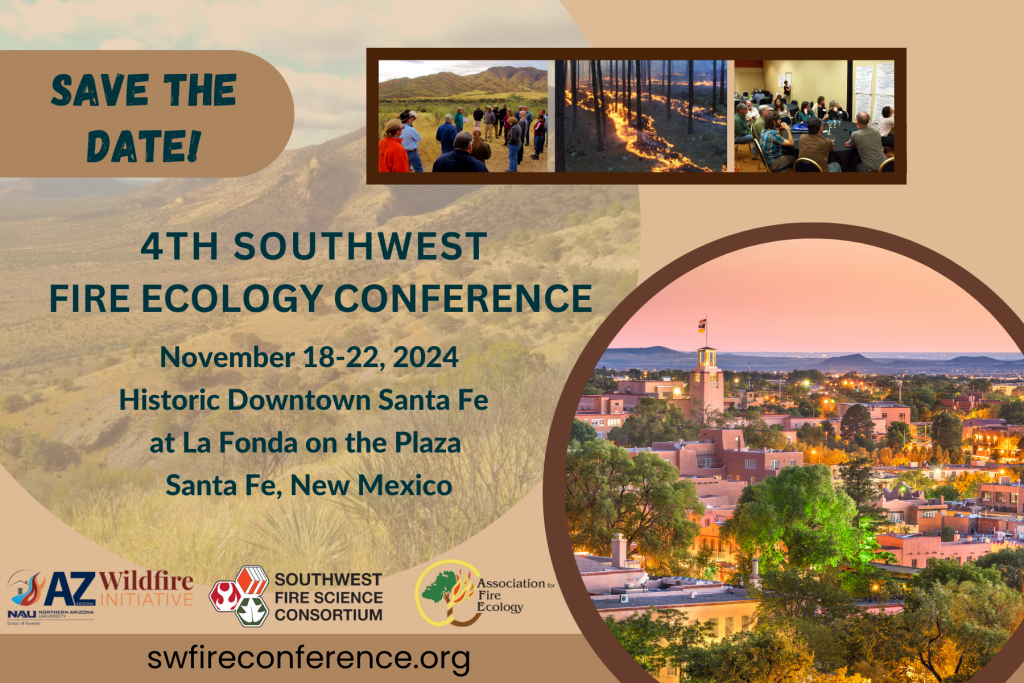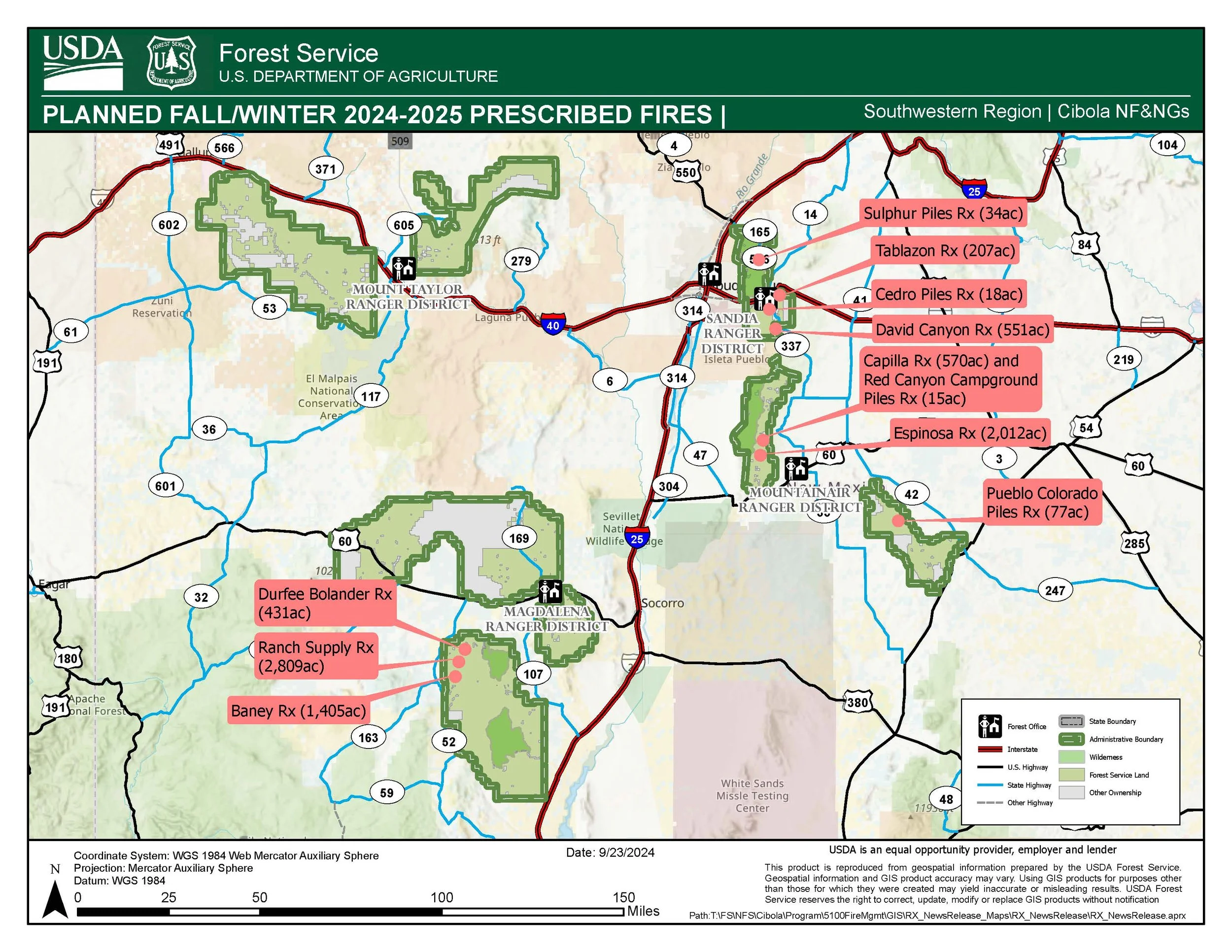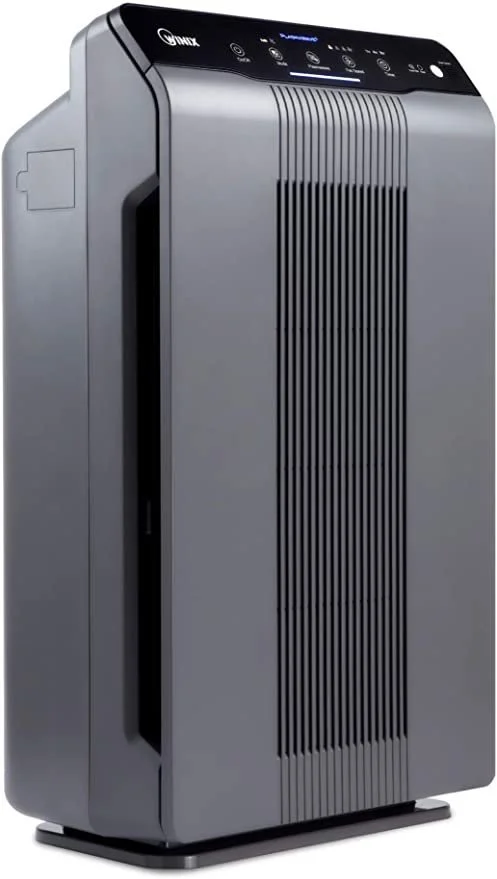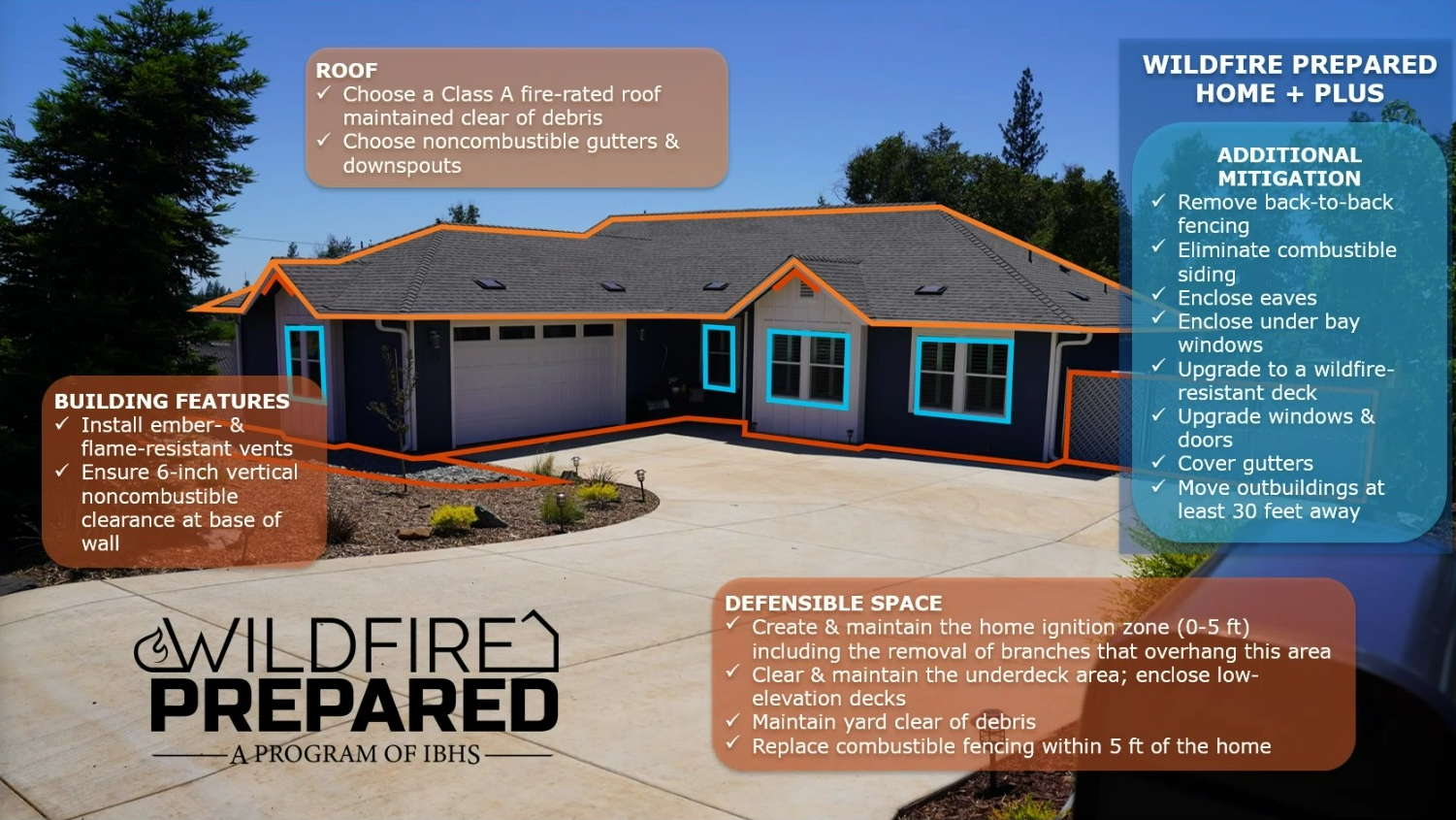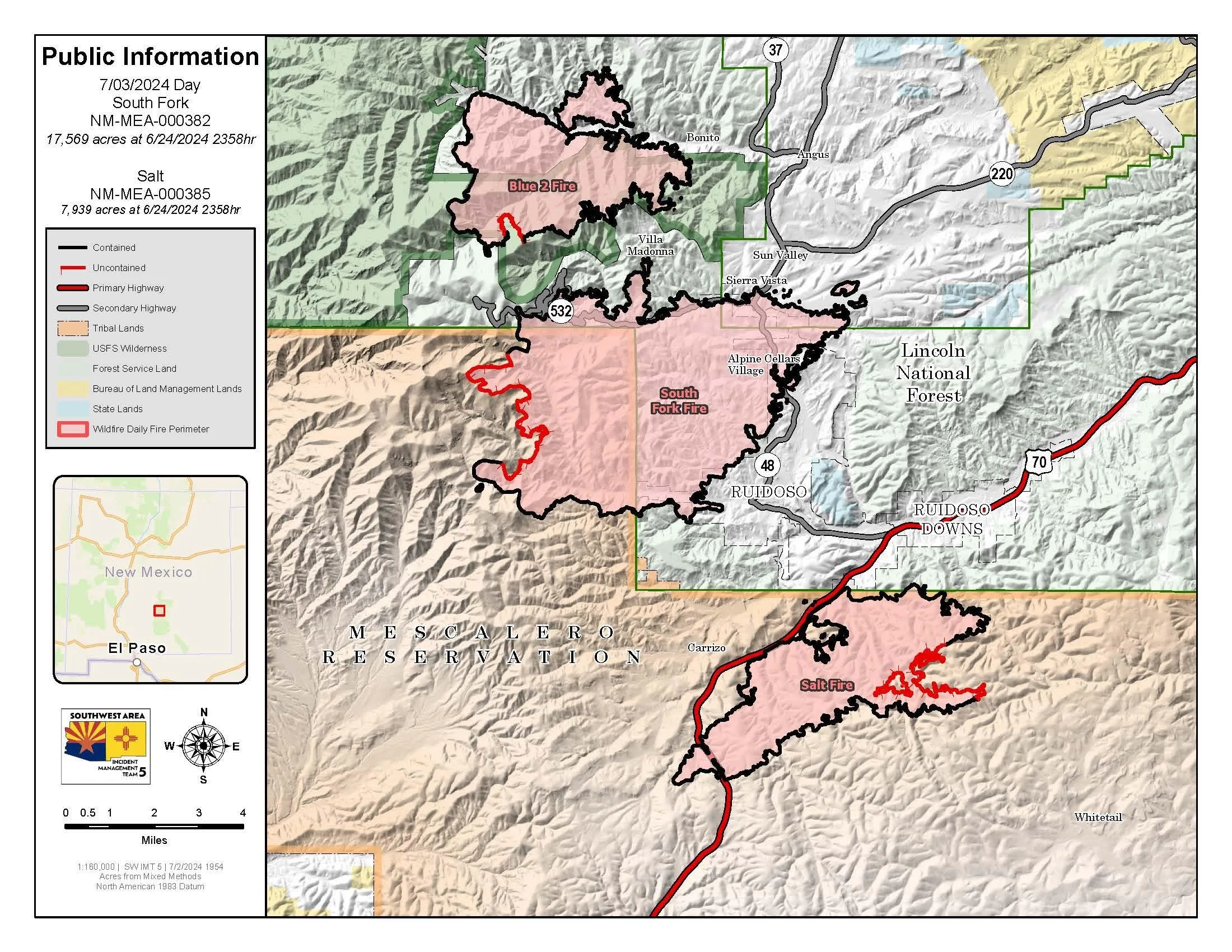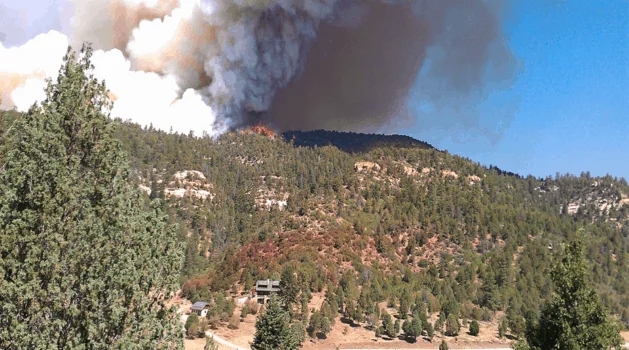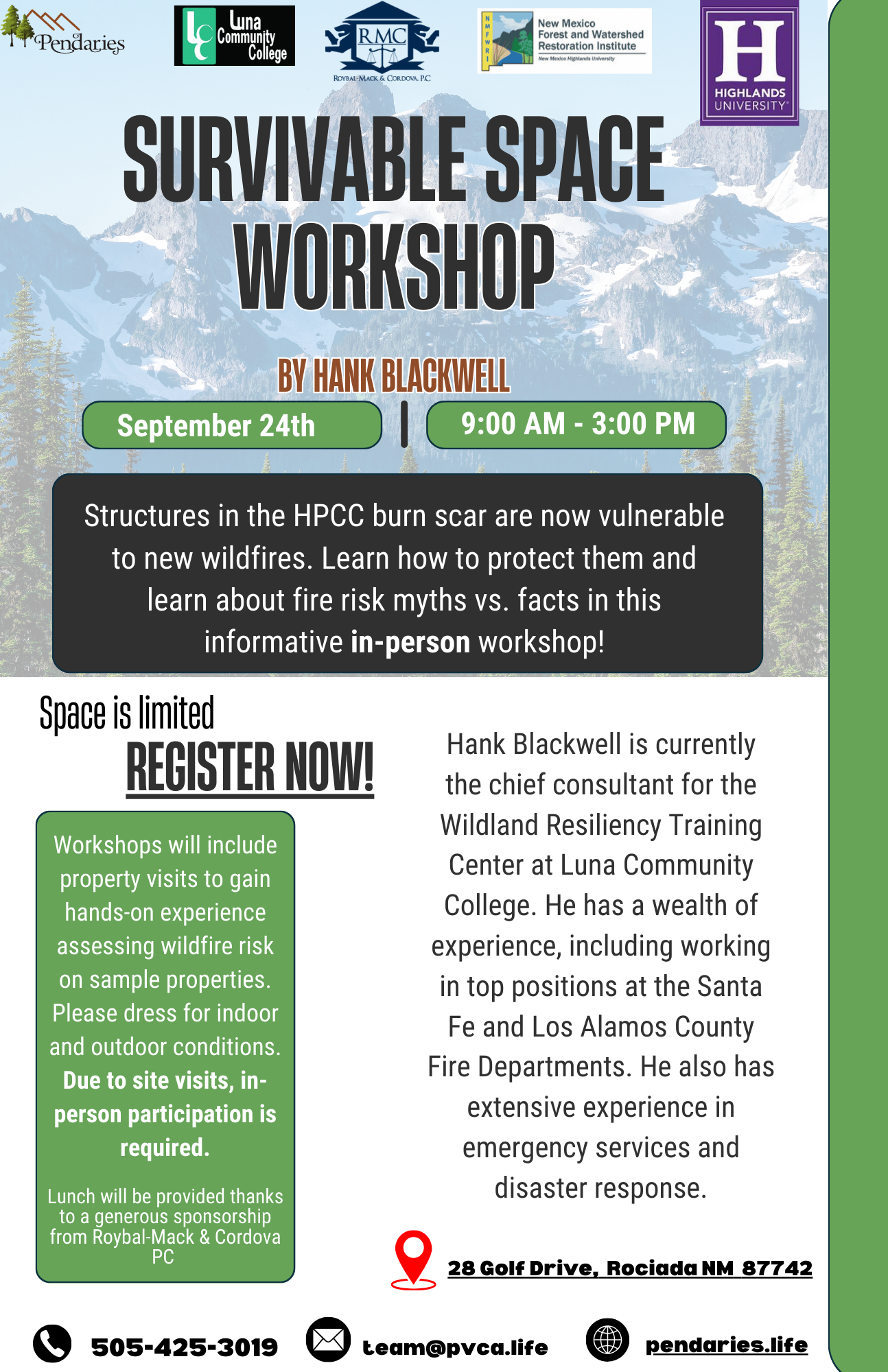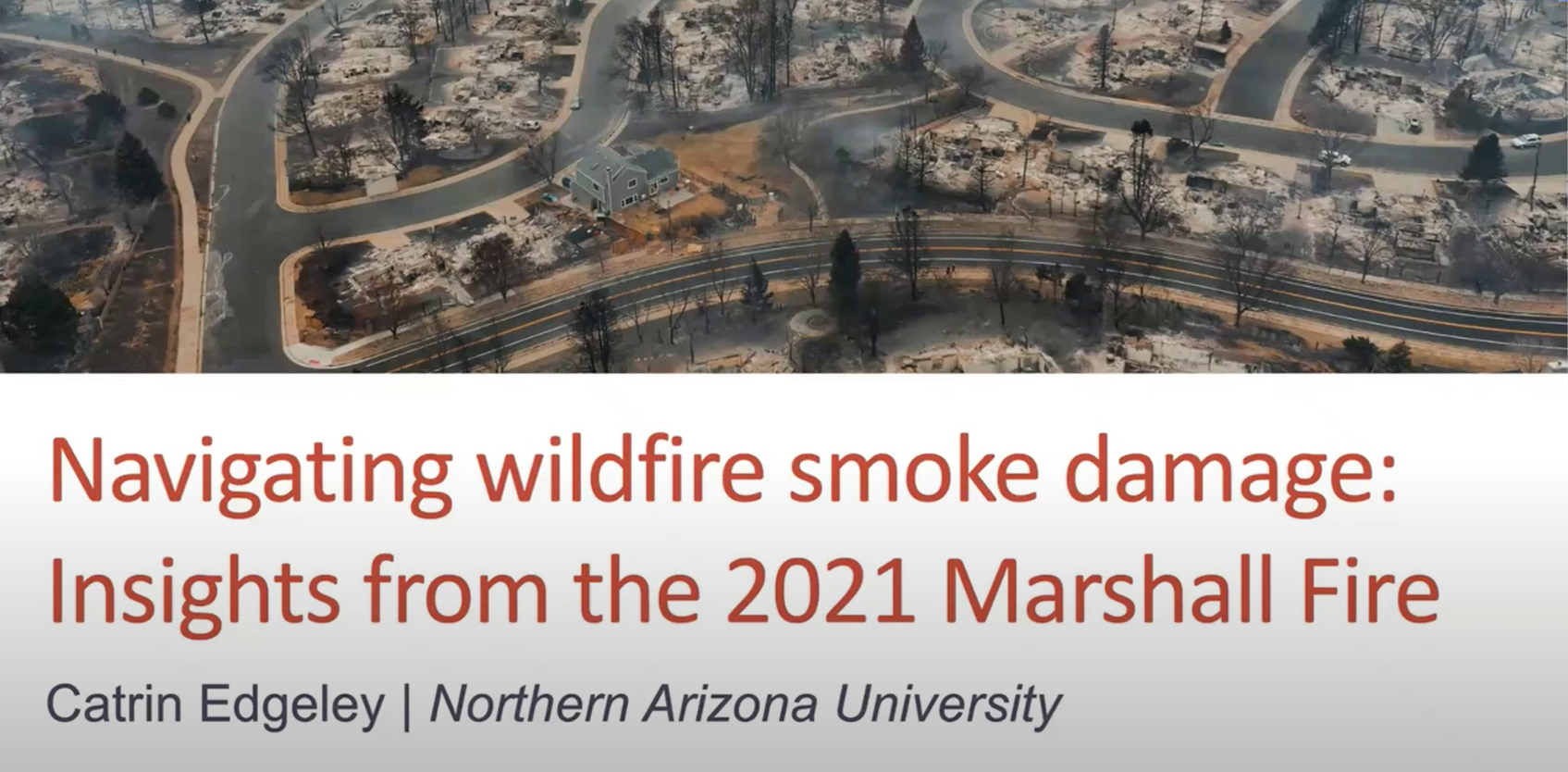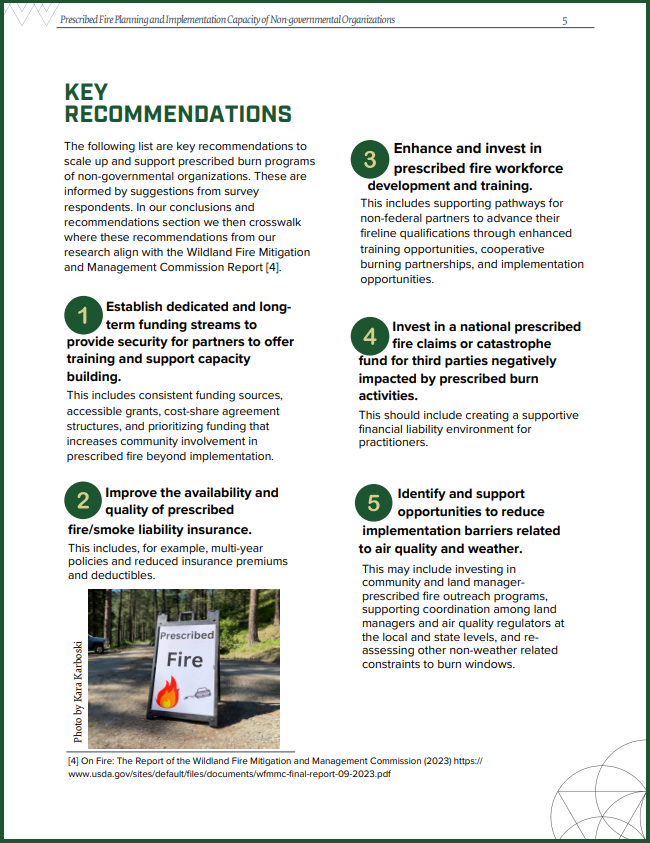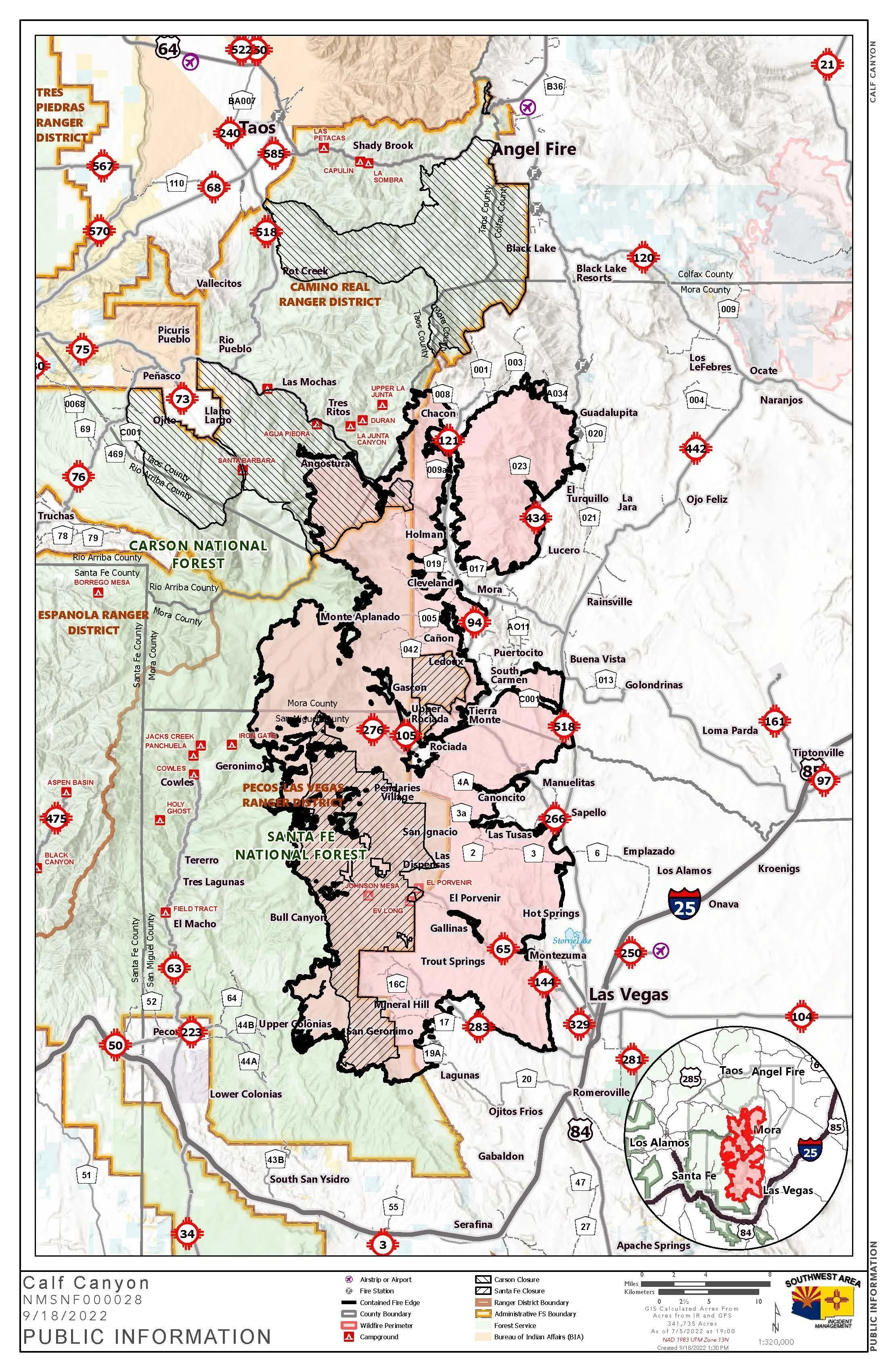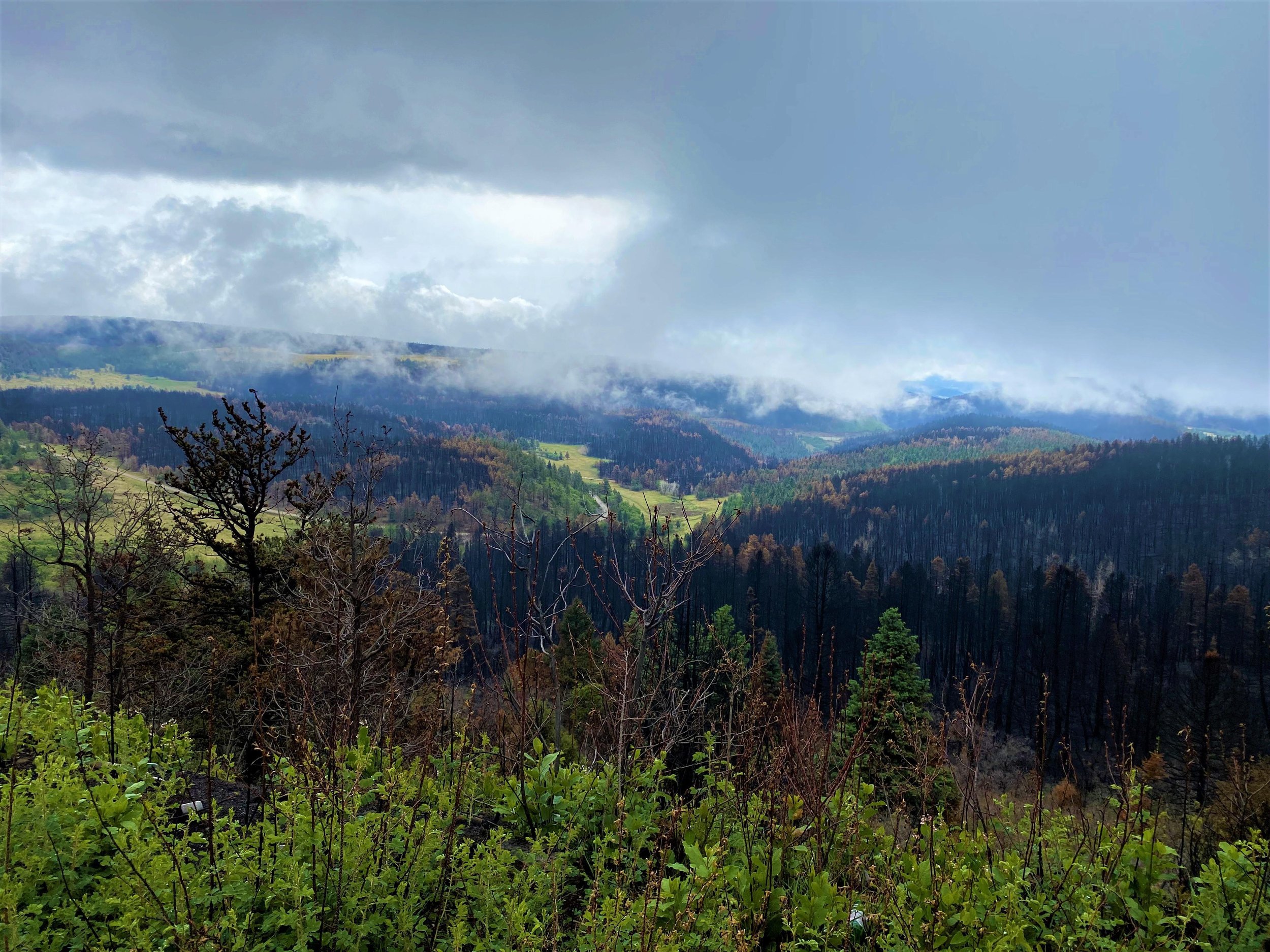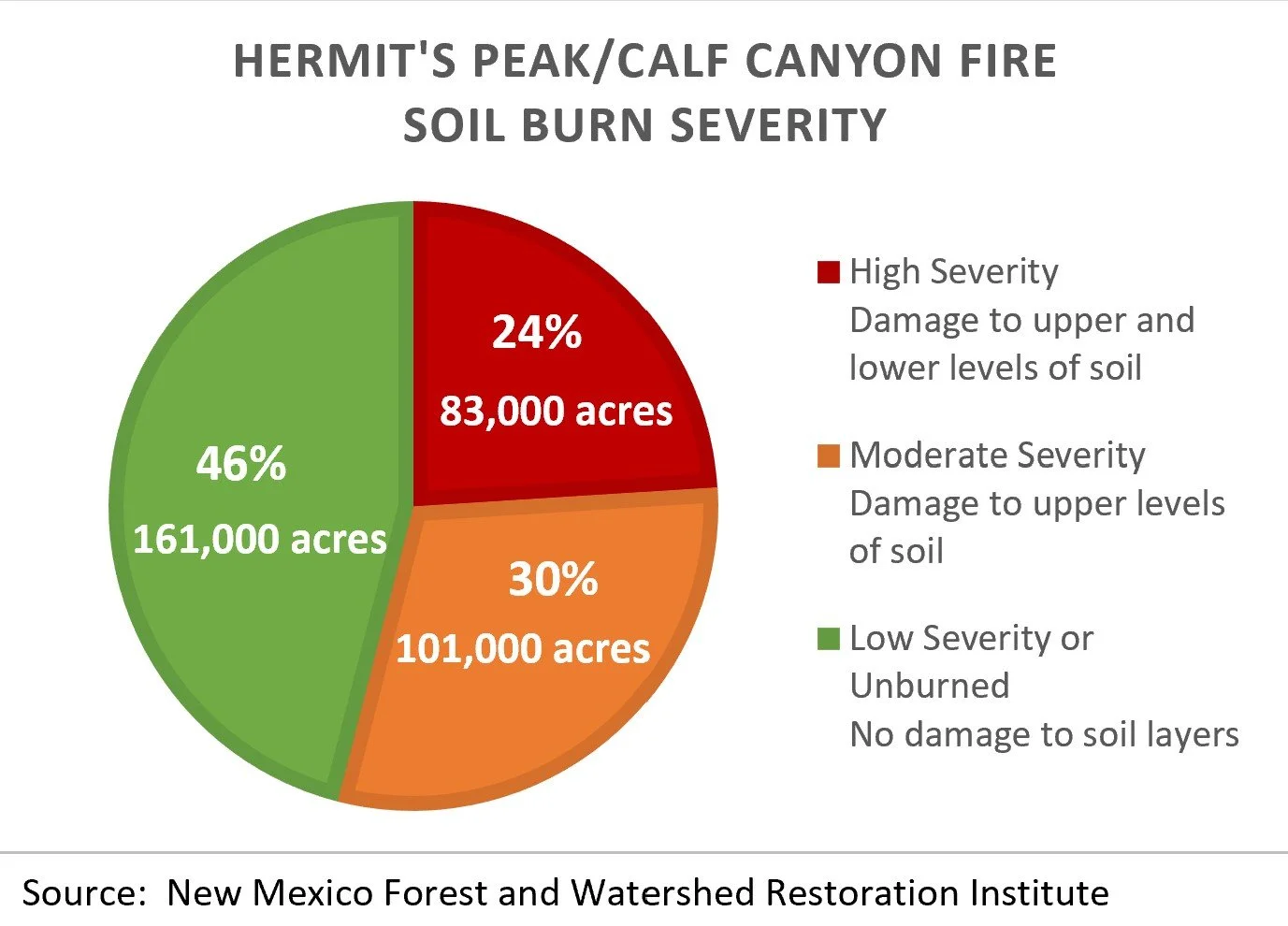Happy Wednesday, Fireshed Community!
This year’s wildfire season will soon come to a close across the west, but that doesn’t mean that the impacts of recent wildfires are no longer a concern. As many people in New Mexico know, the fire itself is just the start of a much longer post-fire recovery journey. Today’s Wildfire Wednesday offers some interesting research on post-fire landscape effects and highlights an ongoing educational webinar series which aims to answer some of the most challenging questions related to post-fire recovery and management.
This Wildfire Wednesday features:
Event: Post-Fire webinar series from the Northwest
The Reburn model: how post-fire landscapes react to and burn under future ignitions
Unexpected post-fire effects: fire scars informing weather
Upcoming learning opportunities: 4th Southwest Fire Ecology Conference
Take care and enjoy these last warm days of autumn,
Rachel
Events
Post-fire webinar series from NWFSC and WA-DNR
The Northwest Fire Science Consortium and Washington State Department of Natural Resources are hosting an ongoing informational webinar series on post-wildfire recovery featuring speakers and lessons learned from across the West. All webinars take place on Wednesdays through October/November from 12-1pm PT / 1-2pm MT. Presentations will be recorded, so if you miss any in the series you can watch them at a later date on the NWFSC YouTube channel.
Webinar #1: 10/9: RECORDED
Fire Scars on the Landscape: The Science and Management of Debris Flows
Recently burned areas are at increased risk of flooding and debris flows, or rapidly moving landslides. Learn more about the science behind why debris flows happen, and how managers use that science to mitigate these hazards, even ahead of the fire.
Recording: https://youtu.be/qrhYsTCmTW4?si=s5Ms9kpY958ynhZs
Webinar #2: 10/16: RECORDED
Exploring Diverse Community Pathways to Recovery
After a fire, communities have to work together to organize their recovery effort. Local governments and community groups are on the front lines of figuring out what this looks like in their local contexts. A social scientist and a long-term recovery group leader describe the social and organizational processes through which recovery can happen, and how communities may proactively plan for recovery.
Recording: https://youtu.be/oPRQEA27gKs?si=q39cRByMk_uc_tHx
Webinar #3: 10/23: HAPPENING TODAY
Post-Fire Restoration Infrastructure: Adjusting our Systems to New Patterns of Runoff
We reengineer and rebuild after wildfire through a range of treatments, trying to match our built infrastructure to new, amplified patterns of runoff. A national wildfire practitioner speaks to how leaders and policy makers are increasingly recognizing the need to manage the built environment to accommodate these changes, and an environmental engineer shares a powerful story of transformation in the face of repeated wildfire events.
REGISTER: https://tinyurl.com/PostfireRunoff
Webinar #4: 10/30
The Reforestation Pipeline: Ensuring Equitable Access to Replanting
The science behind reforestation is not new, but in a changing climate, new challenges are rising around what to plant, where to plant, and who has access to planting opportunities. Two nonprofit practitioners review the science of reforestation and how we can develop effective governance systems for implementing planting programs that match the scale of fires and fairly meet the needs of the impacted landowners.
REGISTER: https://tinyurl.com/ReplantingPipeline
Webinar #5: 11/6
Recreating and Relating to the Land After Fire
Wildfires reshape recreation access and experiences over the short and long term. A researcher shares emerging science that is revealing how people return to and perceive wildfire-affected landscapes, and a manager shares how they navigate decisions about supporting recreation in these contexts.
REGISTER: https://tinyurl.com/RecreatingPostfire
The REBURN Model
How post-fire landscapes react to and burn under future ignitions
Historically, past fire effects limited future fire growth and severity. These reburn dynamics from cultural and lightning ignitions were central to the ecology of fire in the West. Over millennia, reburns created heterogenous (ecologically and spatially diverse) patchworks of vegetation and flammable fuels that provided avenues and impediments to both 1. the flow of future fires and 2. feedbacks to future fire event sizes and their severity patterns.
These dynamics have been significantly altered after more than a century of settler colonization, fire exclusion, and past forest management, now compounded by rapid climatic warming. Under climate change, the area impacted by large and severe wildfires will likely increase — with further implications for self-regulating properties as described above. An in-depth understanding of the ecology of reburns and their influence on system-level dynamics is necessary to provide a baseline for understanding current and future landscape fire-vegetation interactions.
Conclusions from two 2023 papers (The REBURN model and System-level feedbacks of active fire regimes in large landscapes) found that long periods of fire exclusion during 20th century suppression efforts were unprecedented for relatively frequent fire landscapes, creating large swaths of uncharacteristic decadent mature forest, particularly at higher elevations. The lack of ‘ecological memory’ normally associated with past fires strongly influences subsequent fire behavior and effects, leading to large patches burning with stand replacing fire, followed by generally abundant post-fire regeneration of fast-growing shrubs or conifers. This abundant vegetation and fire-killed tree snags and logs, all of which are readily available to burn, increases the chances of secondary and tertiary severe reburns, with additional implications on carbon storage, emissions, and smoke impacts to surrounding communities.
The biggest takeaway is that unless active fire management is applied to break up forest continuity, future drying trends across the West and the potential for increased lightning activity suggest that burned areas will continue to reburn at mixed - including high - severity, and fire will play an increasingly important role in this synchronized and compositionally simplified landscape as it recovers. A return of prescribed fire or managed wildfire to previously burned areas will start the process of introducing temporal variation and increasing resilience to future wildfires, whereas complete suppression will predispose the landscape to future large and severe wildfires. This means that much of the landmass which is burned and in some stage of post-fire recovery acts as a fire buffer, making it critical for the rest of the forest to remain forest. Burned and recovering vegetation mosaics provide functional stabilizing feedbacks, a kind of metastability, which limit future fire size and severity, even under extreme weather conditions.
Unexpected Post-Fire Effects
Fire scars inform weather and continue to reshape the landscape
In late 2021, William R. Cotton, Professor Emeritus of Meteorology at Colorado State University sat down with The Conversation, an independent collaboration between editors and academics that provides informed news analysis and commentary to the general public. He provided a think piece based on research by himself and his colleague Elizabeth Page on how large fire scars can impact the frequency and severity of post-fire thunderstorms, accelerating the post-fire impacts on the landscape. Read the full article here.
“Wildfires burn millions of acres of land every year, leaving changed landscapes that are prone to flooding. Less well known is that these already vulnerable regions can also intensify and in some cases initiate thunderstorms. Wildfire burn scars are often left with little vegetation and with a darker [often hydrophobic] soil surface that tends to repel rather than absorb water. These changes in vegetation and soil properties leave the land more susceptible to flooding and erosion, so less rainfall is necessary to produce a devastating flood and debris flow than in an undisturbed environment.”
What is perhaps more interesting is that research has shown that burn scars can affect the microclimate within and above the scar, “initiating or invigorating thunderstorms, raising the risk both of flooding and of lightning that could spark more fires in surrounding areas”. This happens through several mechanisms:
Surface temperatures and heat flux increase significantly over burn scars due to lack of vegetation, reduced soil moisture, and lower surface albedo – essentially how well it reflects sunlight. When burned soil is darker, it absorbs more energy from the sun.
“The temperature difference can drive air currents, causing convection – the motion of warmer air rising and cooler air sinking. When that rising warm air draws in more humid air from surrounding areas, it can produce cumulonimbus clouds and even thunderstorms that can trigger rain and flooding.” This leads to burn scars enhancing both updraft winds and precipitation from storms developing overhead by ~15%.
“[For] how long burn scars will continue to fuel storms depends on how arid the region is, how quickly vegetation recovers, [and how the local climate and climatic patterns are changed by global warming]. Forecasters, emergency responders and people living in and near wildfire burn scars need to be aware that these areas are at risk for potential major flooding and debris flows and invigorated storms with a potential for heavy precipitation”, oftentimes for years or decades after the fire has burned. This is exemplified by the experience of Santa Clara Pueblo with Santa Clara Canyon, an area hard-hit by the Las Conchas Fire which is still experiencing highly destructive floods nearly 15 years post-fire.
4th Southwest Fire Ecology Conference
Register for the opportunity to learn and network this November!
The Southwest Fire Science Consortium, Arizona Wildfire Initiative, and the Association for Fire Ecology are hosting the 4th Southwest Fire Ecology Conference in Santa Fe, New Mexico from November 18-22, 2024. With the conference theme, The Southwest Fire Science Journey: Lessons from the Rearview, New and Unfamiliar Routes, and Promising Horizons, participants and organizers seek to gain a better understanding of the past, present, and future of fire in the Southwest, including the roll of burned landscapes and lessons that can be learned from the post-fire environment and applied to future recovery and protection work. This conference will bring together professionals to share knowledge, exchange ideas, and discuss the latest advancements in fire ecology research and management with a focus on the southwestern United States. Register now for a unique opportunity to connect with fellow professionals and engage in stimulating discussions that will shape the future of fire ecology in this region.
Follow the instructions below to register for the Monday Workshops or Friday Field Trips independently. Workshops cost $25 and are held on Nov 18. Field trips (includes lunch & transportation) cost $75 and are held on Nov 22.
When registering, select “Registration for Workshop or Field Trip Only” and select your choice of workshop or field trip by clicking “Select Ticket Options” from this screen:




